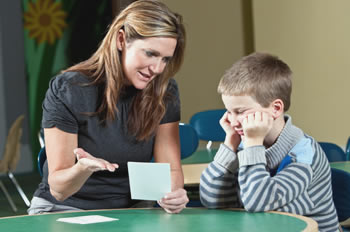Every student deserves a quality education, regardless of their abilities or challenges. At kienhoc.vn, we believe in empowering educators with the knowledge and tools to effectively teach students with disabilities. This article explores various strategies for creating inclusive classrooms and supporting diverse learning styles, ensuring that every student has the opportunity to thrive.
* Understanding Different Learning Styles
Just like superheroes have different powers, students have different ways of learning! Some learn best by listening, some by seeing, and some by doing. It’s like having different learning superpowers!
Identifying Learning Styles
Figuring out how each student learns best is like finding their secret code. We can do this by watching them in class, talking to them, and even playing learning games! Once we crack the code, we can use special teaching tricks that work best for each student.
| Learning Style | Superpower | How They Learn Best |
|---|---|---|
| Visual Learners | Eagle Eyes | Pictures, videos, and colorful things |
| Auditory Learners | Super Hearing | Listening to stories and instructions |
| Kinesthetic Learners | Speedy Hands | Moving around, building things, and hands-on activities |

* Creating an Inclusive Classroom Environment
An inclusive classroom is like a big, friendly playground where everyone feels welcome and can join in the fun. It’s a place where differences are celebrated, and everyone learns and grows together. Let’s explore some ways to make our classrooms super inclusive!
Building a Welcoming Space
Imagine walking into a classroom where everyone smiles and says hello. That’s the kind of welcoming environment we want to create! We can do this by getting to know each student, using their names, and making sure everyone feels valued.
Creating a welcoming space also means making sure the classroom is accessible for everyone. This might involve having ramps for wheelchairs, providing materials in different formats, or using assistive technology to help students with disabilities participate fully.
Fostering Respect and Understanding
In an inclusive classroom, everyone is treated with respect and kindness. We celebrate our differences and learn from each other. We can encourage respect by teaching students about different disabilities and how to be supportive friends.
We can also create opportunities for students to share their experiences and perspectives. This helps everyone understand each other better and build strong friendships. Remember, celebrating special education week is a great way to promote inclusivity and awareness!

* Effective Teaching Strategies
Now that we’ve cracked the code of different learning styles and created a super inclusive classroom, let’s explore some effective teaching strategies that will help all students shine!
Differentiated Instruction: Tailoring the Learning Experience
Differentiated instruction is like having a toolbox full of different teaching tools. We can use these tools to adapt our lessons and activities to meet the unique needs of each student. For example, some students might need more time to complete tasks, while others might benefit from extra challenges. By providing different options and supports, we can ensure that all students are engaged and learning at their own pace.
Multi-Sensory Learning: Engaging All the Senses
Imagine learning about the rainforest by listening to the sounds of animals, smelling exotic flowers, and touching different textures. That’s what multi-sensory learning is all about! It’s about engaging all the senses to make learning more fun and memorable. For example, we can use songs, games, and hands-on activities to help students learn new concepts.
“Tell me and I forget, teach me and I may remember, involve me and I learn.” – Benjamin Franklin
Technology as a Learning Tool
Technology can be a powerful tool for supporting students with disabilities. Assistive technology devices for students can help them communicate, access information, and participate more fully in class. For example, text-to-speech software can help students with reading difficulties, while speech recognition software can help students with writing difficulties. There are also many educational tools for special-needs students that can make learning more engaging and accessible.
Technology can also be used to create personalized learning experiences. For example, students can use educational apps and websites to learn at their own pace and level. They can also use technology to collaborate with classmates and share their work with others.

* Collaboration and Support
Teaching students with disabilities is a team effort! We can work together with parents, specialists, and other teachers to create the best learning experience for each student. It’s like having a superhero team, where everyone uses their special skills to help the students succeed.
Parents know their children best, so it’s important to talk to them regularly and work together to support their child’s learning. Specialists, such as speech therapists or occupational therapists, can provide additional support and strategies. And by collaborating with other teachers, we can share ideas and resources to create a more inclusive learning environment for all students. Remember, teamwork makes the dream work!

Final Thought
Teaching students with disabilities requires dedication, creativity, and a commitment to inclusivity. By understanding individual needs, fostering a supportive environment, and implementing effective strategies, educators can empower students with disabilities to reach their full potential and succeed in their academic journeys.



